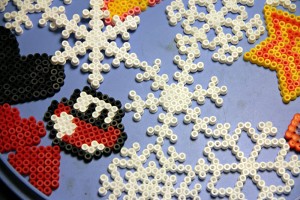or just greedy? Norwegian lesson of the day:
i pose og sekk, idiom, meaning literally “in bag and (knap)sack”, akin to the english “to have one’s cake and eat it”, but in addition to being used about something you want, about expecting too much, you can also use it about being given a little more than expected. An ad-man might say “Velger du denne bilen får du både i pose og sekk” (If you chose this car you get…), meaning that it’s got lots of extras or that it is multi-purpose, a car that looks like a sports car but has plenty of space in the boot and room for passengers, for example.
How on earth did I get on to the subject of cars?
Whatever.
I started a vague attempt at a blog in Norwegian, by the way. I realised that I write english almost exclusively at the moment, and I don’t think it’s a good thing. I’m supposed to be bilingual, you know. There are also a few subjects that I feel like blogging, but that would need too much explanation to make any sense to someone who doesn’t speak Norwegian to be worth the trouble. So, we’ll see. If you only “sort of” read Norwegian and want explanations for anything you don’t understand, give me a shout and I’ll see what I can do. Ok?
Omph. Time for bed. (Yes, really!)
Voice in my head: Pink – Don’t Let Me Get Me.
